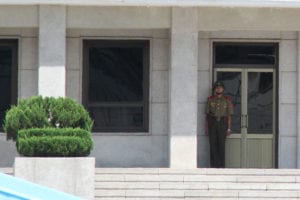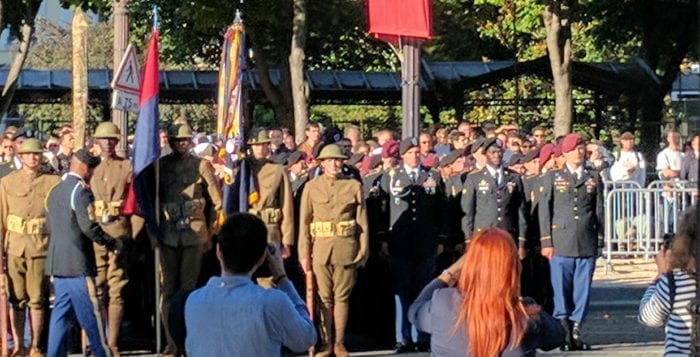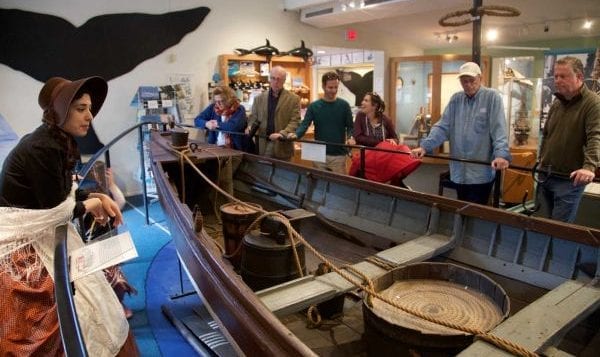By Patrice Domeischel and John Turner
If you happen to have driven recently on Old Field Road in Setauket, where it crosses over Frank Melville Memorial Park, you may have noticed anywhere from a few to a dozen and a half people staring at all angles skyward with binoculars and wondered what’s got their attention. Looking at cloud formations? Maybe UFOs? Waiting for sunset? Watching the monarch butterfly migration? Or perhaps observing numerous bird species as they fly by?
If you picked the last choice, you’d be right (although any migrating monarchs are dutifully noted by observers too!). Specifically, these observers have tuned into an annual phenomenon — common nighthawks passing through Long Island on their annual migration, traveling from their breeding grounds in New England and Canada to their wintering grounds in South America.
These medium-sized birds with long wings that sport distinctive white bars may be seen agilely flitting incessantly over the pond, most often at dawn to an hour later and an hour before, right up until, dusk. These erratic flight movements are not a show for our pleasure but a feeding tactic employed to catch their main food source, small insects like midges, mosquitoes, gnats etc. on the wing.

Not a hawk at all, nighthawks are referred to as “goatsuckers” and are members of the Caprimulgidae family (capri, Latin for goat, and mulgare, Latin for milking). This name is derived from the mistaken belief, originating as early as 2000 years ago, that these wide-mouthed birds sucked the teats on farm goats. In actuality the birds were attracted to the insects stirred up by roving livestock. Other members of this family found on Long Island include the whip-poor-will and the Chuck-will’s-widow.
Common nighthawks, once a common breeder on Long Island (there have been no confirmed breeding records for several decades), and other members of the goatsucker family are experiencing population declines. Published data indicate that nationally common nighthawk numbers have dropped by more than 60 percent over the last 50 years.
This same trend has been seen in New York. Common nighthawks here have declined by 71 percent as a breeding bird between 1985 and 2005, whip-poor-will’s by 57 percent and Chuck-will’s-widows by 62 percent. Prime contributing factors are thought to include rampant pesticide use resulting in diminished insect populations and loss of nesting habitat (being ground nesters they are especially vulnerable to feral and free-roaming cats, fox, skunks and other mammalian predators) and pesticide use.
Pesticide use is highly significant as it has also been implicated in the decline of other birds that feed in the air who also depend upon small aerial insects — species such as swallows, swifts and flycatchers.
There are simply significantly less insects than there were a few decades ago, before the advent and widespread use of pesticides.
Nighthawks do not build a nest, but, as mentioned above, lay their eggs (typically two) directly on the ground, preferring gravelly surfaces. Old gravel rooftops in urban areas once provided additional, appealing nesting habitat for nighthawks, but many roofs are no longer surfaced with gravel, but of rubber, and are not a viable nesting alternative. The shift to other types of roofing materials is also thought to have contributed to a decline in nighthawk numbers.
At the stone bridge on Main Street, the Four Harbors Audubon Society, with the support of the board of the Frank Melville Memorial Park, is conducting a census of nighthawks in an effort to provide an additional source of data about population trends. It is hoped that an annual count, through time as information over the span of years is compiled, can provide additional data on the species’ population trends, helping to supplement the findings gained by the annual nationwide Breeding Bird Survey and periodic statewide Breeding Bird Atlas.

Named the Frank Melville Stone Bridge Nighthawk Watch, pedestrians can watch each evening between 5:30 p.m. until dusk as Audubon members don their binoculars and tally nighthawks and any other avian or winged creature passing through. Several bats are regular visitors at dusk, and a bald eagle, peregrine falcon and other falcon species and hawks have been sighted as have ruby-throated hummingbirds, green herons, belted kingfishers and red-bellied woodpeckers.
It first became evident in October of 2016 when significant nighthawk migration was noticed and recorded at this location, that Frank Melville Park’s stone bridge lookout, with its open vistas overlooking the pond in both directions, might be a hot spot. It was recognized that this location was an important nighthawk migration thoroughfare and a great vantage point to witness them as they traveled through the area. It was also recognized as a hot spot for nighthawks due to the prolific hatch of aerial insects such as midges coming off the two ponds that become ready prey for these birds.
So, an idea was born of curiosity and the desire to help this fascinating, declining species. Why not conduct a common nighthawk survey at the stone bridge? There were questions that needed answering. When do nighthawks arrive here and in what numbers? Are they continuing to decline and at what rate? What can we do to help them?
The data, to date (the nighthawk counting season is not yet complete), have been quite interesting and exciting. The count has been as high as 573 on a wildly exciting evening, where there were “kettles” of birds, circling and feeding, to the only day where no nighthawks were spotted, on a windy, rainy, tropical storm day. Recent data also seem to indicate that most birds travel in a westerly direction, likely following the Long Island Sound coastline before continuing south.
Will data from coming years support our findings from this current year? Will our results mirror the national and statewide trends of declining abundance? Years of data will need to be collected and analyzed; a reliable conclusion cannot be reached based on one year’s findings. But each year’s count results will help us gain a better understanding of the common nighthawk, its numbers and migration trends, and through our research, better protections may be formulated and instituted. Until then, we continue to stand at the stone bridge and count, witness to the exciting phenomenon of nighthawk migration.
The Stone Bridge Nighthawk Count will be ongoing through Oct. 15. All are welcome. Bring your binoculars, your desire to see goatsuckers, and come watch the show. For more information or directions, please call 631-689-6146.



















